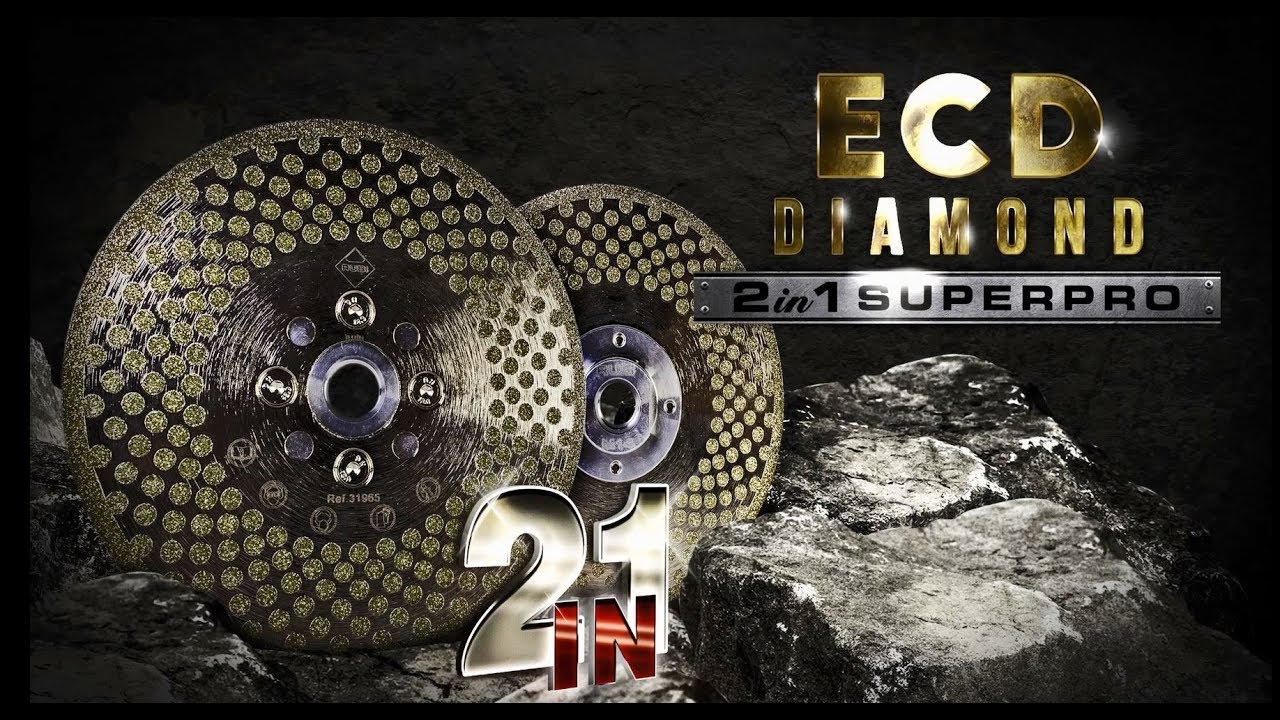
RUBI ECD 2in1 Diamond Blades – the all-round helpers of the tiler
Article about RUBI ECD 2in1 SUPERPRO multi-purpose diamond blades. At the end of 2017, RUBI launched the ECD series of diamond blades. It is unique
In this article we will introduce 2 models of professional manual tile cutters, which are among the top models in our shop. From Rubi it will be the TZ-850 model and from Battipav the Sintesi 93 model. Also with the help of the pictures, we will briefly summarize their features, differences and advantages of each tile cutter.
The TZ and Sintesi manual tile cutters are among the top of the range from Rubi and Battipav. This is matched by the use of high quality and durable materials, precision workmanship and the use of the latest technology to ensure high performance cutting, quality of cut and long service life. On the other hand, the use of the latest technology and quality materials is reflected in the higher purchase price. However, based on our experience and that of our customers, we can confirm that their higher prices can indeed be “seen” and “felt” when they are used, and are rewarded with greater versatility and durability.
The TZ range of manual tile cutters includes models with cutting lengths from 850 to 1550 mm. The Sintesi range includes models with cutting lengths from 930 to 1630 mm. The presented models differ slightly in their basic parameters. The TZ-850 has a maximum cut length of 850 mm, the Sintesi 93 has a slightly longer one, up to 930 mm. Both can also cut large format tiles up to 21 mm thick. But beware, this maximum thickness of the cut tiles also depends on their hardness itself!
2. Equipment and packaging of manual tile cutters
As befits the top models, you get quality accessories for both cutters including 2 cutting wheels – Sintesi comes with 22 mm Ø wheels; TZ comes with 8 mm Ø SILVER PLUS and 22 mm EXTREME PLUS wheels. You will also receive a free transport bag with the TZ cutter.
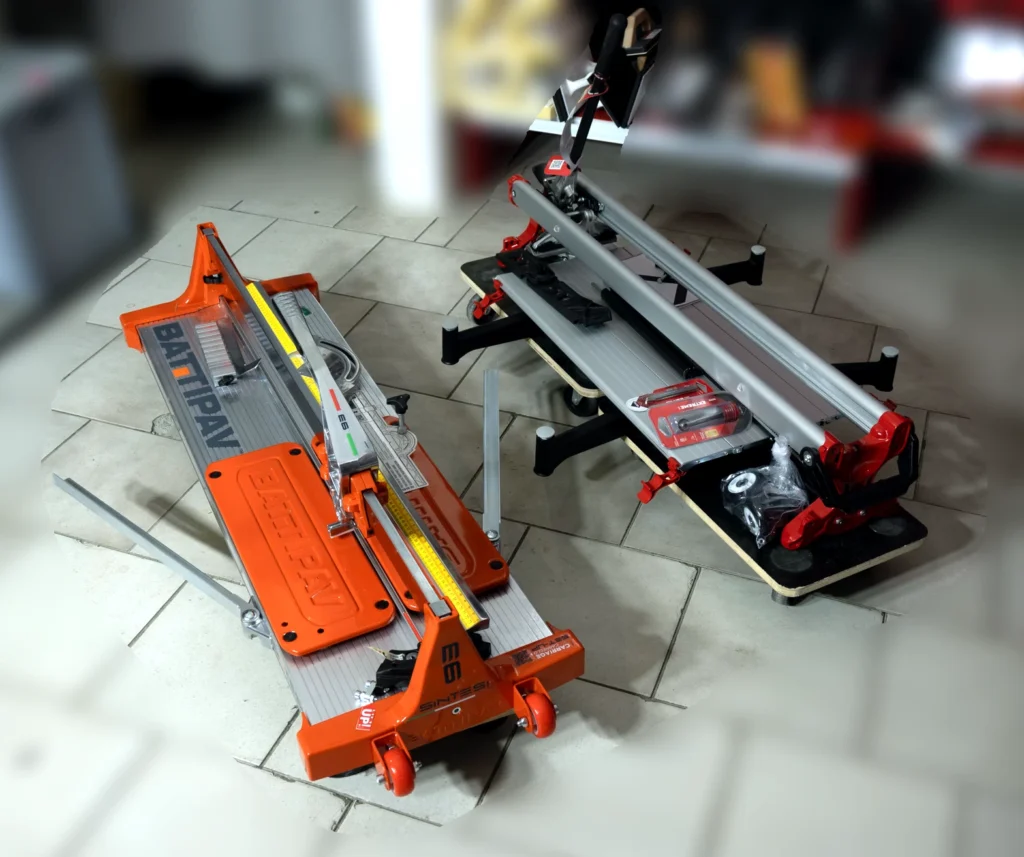
Both cutters use push cutting, but differ significantly in their design. The Sintesi is based on aluminium end profiles which are joined by an extruded aluminium base, the width of which is the same as the width of the work tables. The TZ has the same aluminium profiles at both ends, but these are connected by a much narrower steel profile. The result is a narrower TZ structure, which is therefore easier to store and carry. Both manufacturers use aluminium castings with an optimised shape to achieve high strength and at the same time lower weight compared to steel.
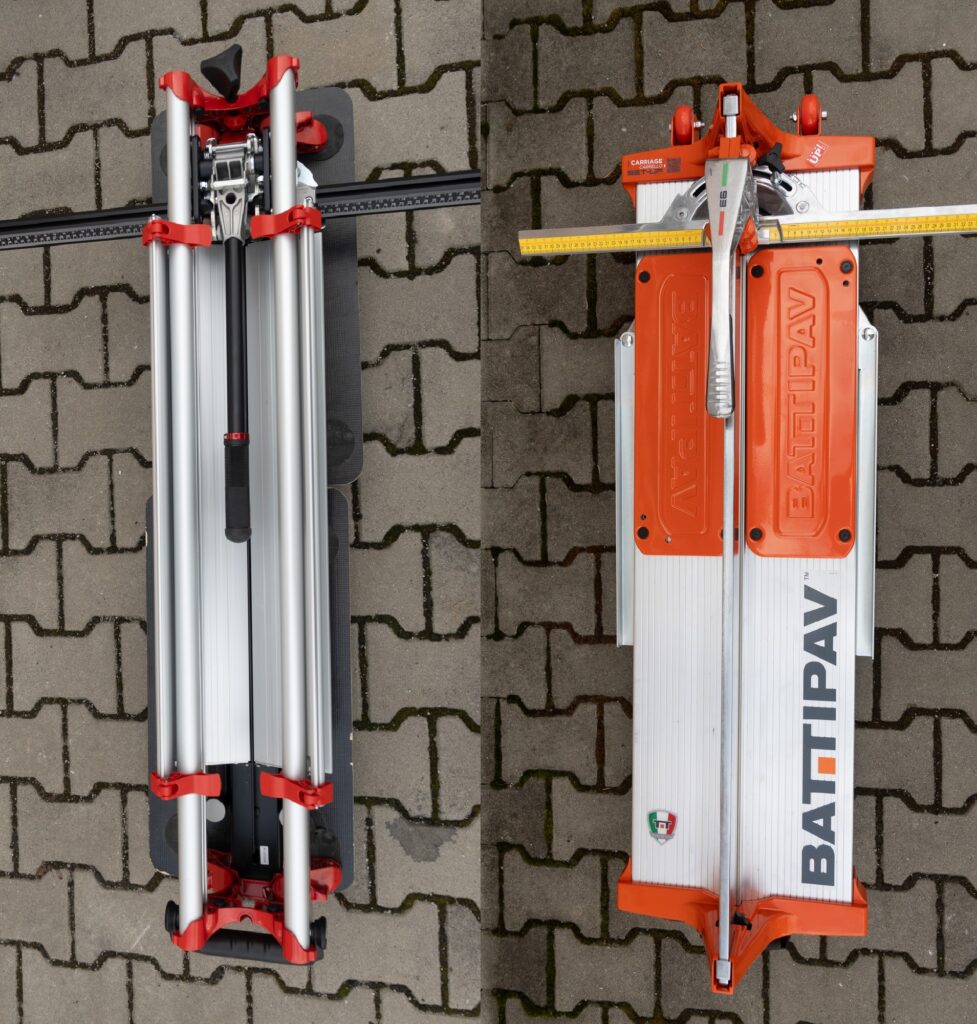
The fundamental difference between the cutters is also in the guides and the design of the cutting carriage with wheel and breaker. The TZ has two profiled guides between which the cutting carriage moves. There is always an excellent view of the cutting line between these rails. The Sintesi has only one square guide rail along which the carriage moves. Compared to the TZ, there is a slightly worse view of the cutting line and you always have to look at it slightly obliquely. The guides of both cutters are first-class strong and therefore also handle cutting tiles up to 21 mm thick.
There are also big differences in the cutting carriages, which are based on the design of the guides. The TZ uses an aluminum cutting carriage that moves thanks to 4 ball bearing guide wheels that move inside the rails. Additionally, it has 2 adjustable castors that can be used to provide clearance in the movement of the carriage. Sintesi also has an aluminium trolley, but with up to 9 ball bearing guides, spaced on all 4 sides of the guide rails. Some of them are also adjustable. Both designs ensure smooth and precise operation. The Sintesi design is better in terms of maintenance and keeping the moulding clean.
Both carriages allow one-handed operation for cutting and breaking and have plastic protectors on the breaker. The TZ has a slightly wider breaker, which may be an advantage when breaking some tiles. It uses 2 different breaker positions depending on the thickness of the tile being cut. Sintesi has a magnetic breaker operated by a lever. In terms of cutting comfort, the Sintesi has a profiled aluminum lever with side rubber grips that provide a firmer grip on the lever. The TZ lever has a rubber grip at the end of the handle to provide better comfort in use.
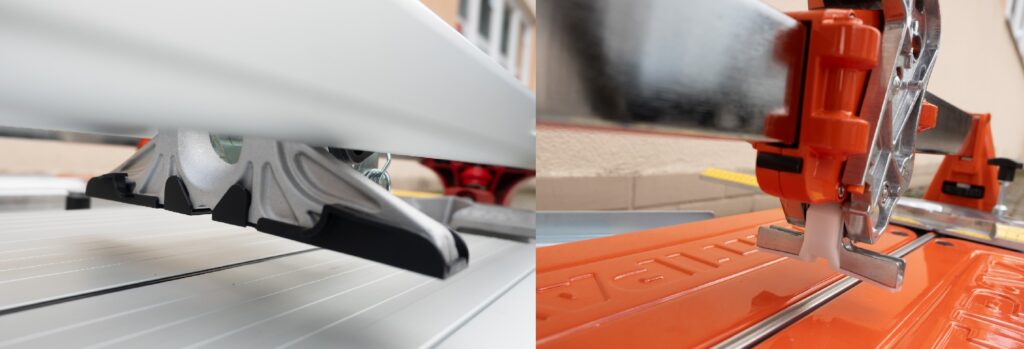
Cutting machines also differ quite a bit in the design of the work tables and side supports. The Sintesi has a simple 2 steel sprung tables that do not even cover half of the maximum cutting length of the cutter. Between them there is a solid anticorrosion bar that serves as a support when breaking the tile. The width of the tables is approximately 32 cm (16 cm per side). It has 2 adjustable side supports. The TZ has a more complicated system. Its 2 sprung tables are foldable, which is why it is narrower when folded and wider than the Sintesi when unfolded. The width of its tables is approximately 42 cm (21 cm on each side), which are supported by 4 side supports, which also serve to support larger tiles outside the table. These supports are sprung. The length of the tables is almost the same as the maximum cut length. Also, the TZ has a fixed center bar at the tile breaking line.

The rulers of both cutters are quite similar and provide all the usual functions, such as quick tool-free adjustment for cutting at an angle, repeat cuts, a scale in cm and a length scale converted for cutting tiles at a 45° angle. We find the yellow Sintesi ruler to be more legible compared to the TZ ruler. Its ruler consists of several metal parts that need to be assembled first. Sintesi has an all-aluminum ruler with metal stops. The TZ has them made of durable plastic. Its advantage is again the locking of the ruler during diagonal cuts. The Sintesi ruler needs to be aligned correctly using the indicated arrow, which can sometimes take more time. The lengths of the rulers are comparable, the TZ is 70 + 42 cm and the Sintesi is 75 + 35 cm.
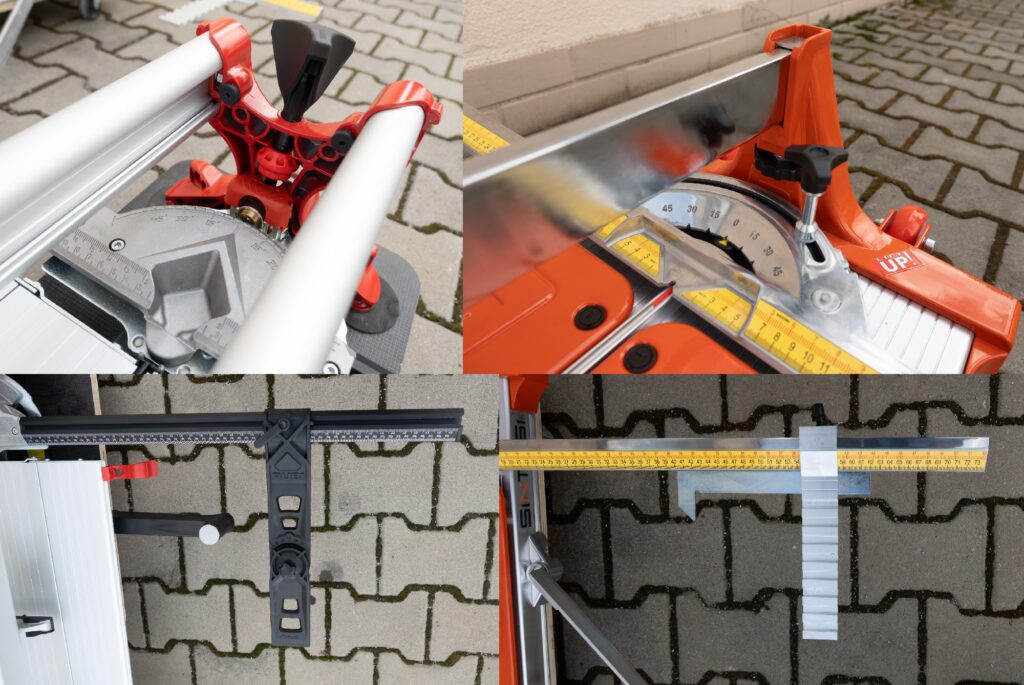
Sintesi allows you to adjust the distance of the guide rail from the work table by means of two swivel castors in the end profiles. This distance is useful to vary when cutting different thicknesses of tiles. For this purpose, the TZ uses 2 breaker positions and the possibility of adjustable fixing of the cutting wheel.
The TZ is a bit lighter than the Sintesi, at just under 22 kg compared to the Sintesi’s 24 kg. Both cutters have a handle and wheels for easier pulling of the cutter. The advantage of the TZ is that it can be towed even when stored in a transport bag.
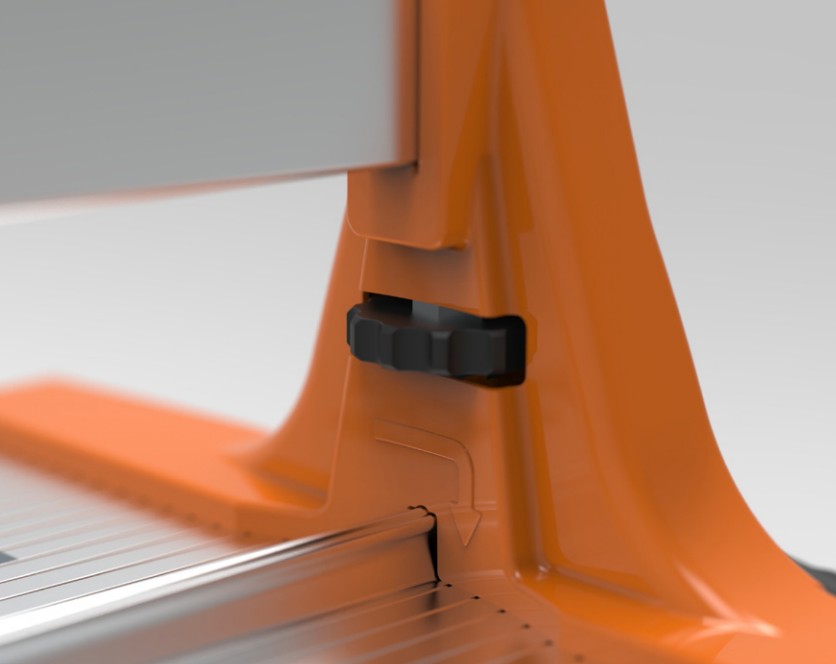
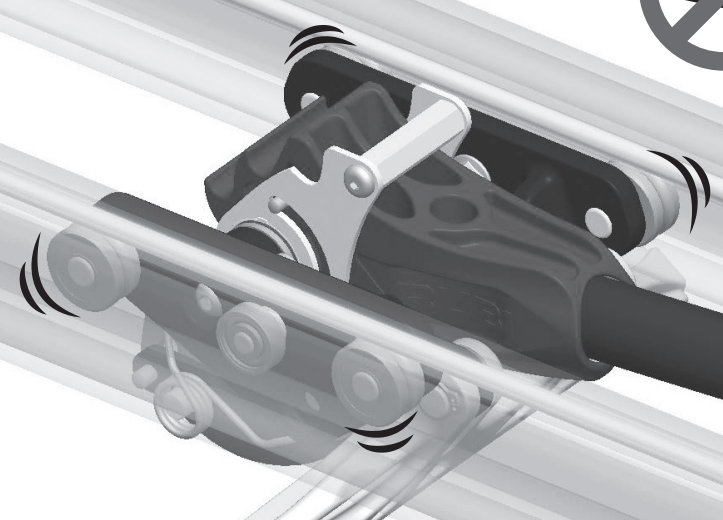
Conclusion
Obidve rezačky sú najlepšími modelmi v ponuke Rubi a Battipav a tomu zodpovedá aj ich prevedenie, funkcie a aj ceny. Rezačky využívajú rôzne konštrukcie základní, rezacie vozíky a tiež sa líšia v rôznych detailoch pre dosiahnutie vysokej presnosti a lámacej kapacity. Mnohé z týchto technológií a konštrukčných riešení postupne preberajú aj nižšie a lacnejšie rady rezačiek, takže ak sú pre Vás tieto top modely cenovo nedostupné, môžete zvážiť kúpu rezačky z nižšej rady, napr. RUBI TX or HIT, or Battipav Profi Evo or Super Pro Evo.
It’s really hard to clearly decide which cutter is better. You will certainly not make a mistake by buying either of them and they will serve you reliably for a long time. The higher price of the TZ by about 30% compared to the Sintesi may also be a factor in the evaluation. But even so, we would still choose the Rubi TZ-850 as better product. It has really no “weak point” and offers greater versatility, efficiency and several functional and ergonomic advantages over the Sintesi.

Article about RUBI ECD 2in1 SUPERPRO multi-purpose diamond blades. At the end of 2017, RUBI launched the ECD series of diamond blades. It is unique
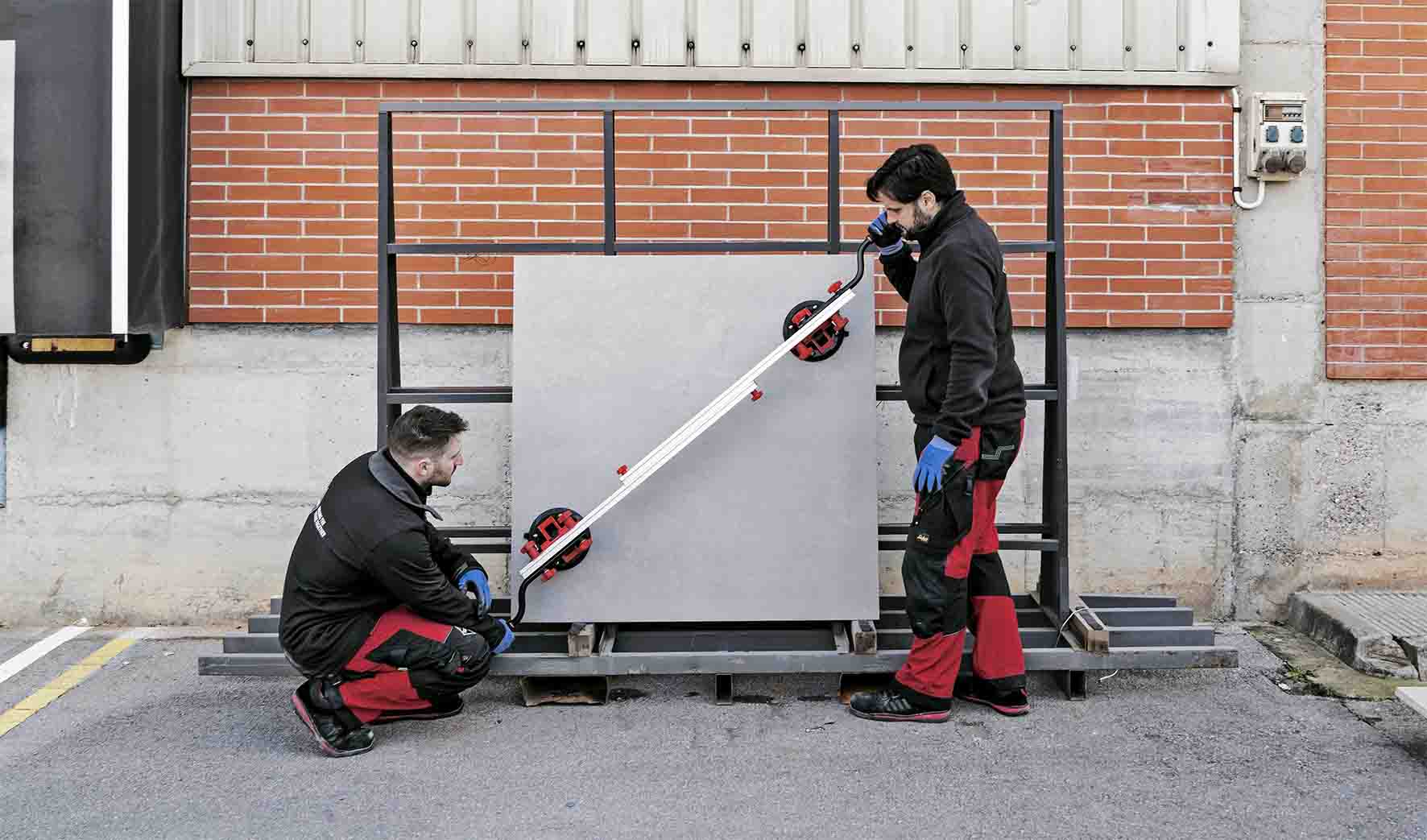
In today’s article, we will briefly introduce large-format tiles and 6 key tips for their professional installation. The use of large-format tiles is currently a
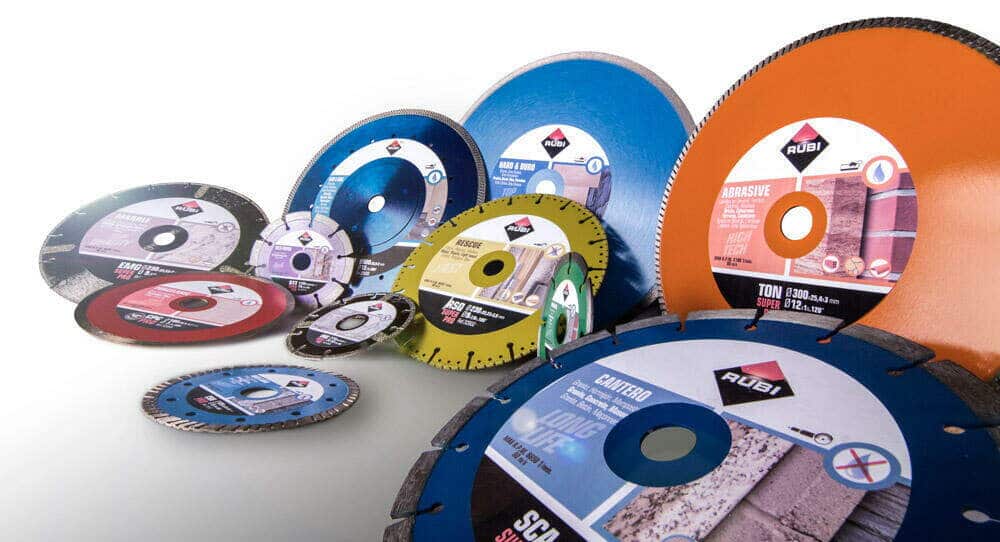
In today’s blog we take a closer look at diamond blades and their blades. We will explain how to choose the most suitable blade for

When you decide to renovate your house, apartment, etc. other space, in addition to the initial planning, the practical part of it needs to be addressed. The practical part of the reconstruction begins with the demolition phase, during which the…
Countries of delivery
Slovakia, Czech Republic, Hungary, Poland, Slovenia, Romania, Austria and Croatia